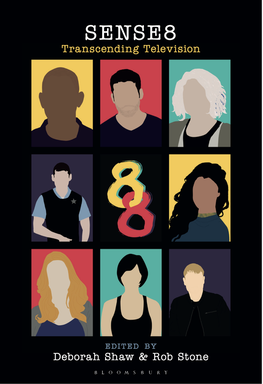
SENSE8: TRANSCENDING TELEVISION was co-edited with Deborah Shaw and includes 12 chapters. It provides focused, coherent and targeted analysis of the main themes and meanings of Sense8 in terms of its production, reception, dissemination and connections with a wide variety of industrial, social, cultural and political contexts. The contributors, including the co-editors, reflect a level and range of expertise that allows for collaboration on a debate that explores the very limits of what television is capable. This volume is much more than an academic examination of a series; it is an account and analysis of the way that we all receive, communicate and consider ourselves as participants in global communities that are social, political and cultural, and now both physical and virtual too. Not the easiest book to edit, particularly during the pandemic, but it still manages to cover the main themes of the series, the industrial context of its production, and the global extent of its reception. Something of a labour of love for all the contributors who made it through to publication, but especially for Deb and I, the book was published by Bloomsbury in June 2021. Contributors include Amanda Lotz, Zoë Shacklock, So Mayer, Rosalind Galt, Cáel M. Keegan, Amanda D. Lotz, Will McKeown, John Lessard, James Walters, Luis Freijo, Rox Samer and Laura Horak. The original cover artwork is by Isadora Casavechia.
BLOOMSBURY
BLOOMSBURY

- THE ROUTLEDGE COMPANION TO WORLD CINEMA was a massive project co-edited with Paul Cooke, Stephanie Dennison and Alex Marlow-Mann that brought together over forty contributors to explore the various territories of the cinemas of the world by means of a new critical framework based on longitudinal (historical, geographical, national, regional, transnational and global) and latitudinal (theoretical, industrial, thematic, aesthetic, technological and commercial) imperatives and parameters. The book covers a global range of films and filmmakers, their movements and audiences, comparing their cultural, technological and political dynamics, identifying the impulses that constantly reshape the form and function of the cinemas of the world. Designed as a dynamic forum for forty world-leading scholars, this companion contains significant expertise and insight and is dedicated to challenging complacent views of hegemonic film cultures and replacing outmoded ideas about production, distribution and reception. It offers both a survey and an investigation into the condition and activity of contemporary filmmaking worldwide, often challenging long-standing categories and weighted—often politically motivated—value judgements, thereby grounding and aligning the reader in an activity of remapping which is designed to prompt rethinking.
- ROUTLEDGE
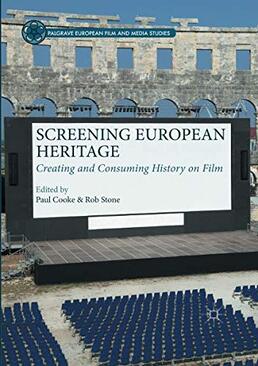
SCREENING EUROPEAN HERITAGE: CREATING AND CONSUMING HISTORY ON FILM was co-edited with Paul Cooke and was the main output from a research network. The book provides a unique examination of the way Europe’s past is represented on contemporary screens and what this says about contemporary cultural attitudes to history. How do historical dramas come to TV and cinema screens across Europe? How is this shaped by the policies and practices of cultural institutions, from media funding boards to tourist agencies and heritage sites? Who watches these productions and how are they consumed in cinemas, on TV and online? From The Lives of Others to Game of Thrones, historical dramas are a particularly visible part of mainstream European film production, often generating major national debates on the role of the past in contemporary national identity construction. My own chapter is on the overlap of film tourism and heritage, whereby travellers explore the sets and locations of films and television series. It has an arcane critical framework - Saint Teresa's four stages of ecstasy - but it works.
PALGRAVE
PALGRAVE
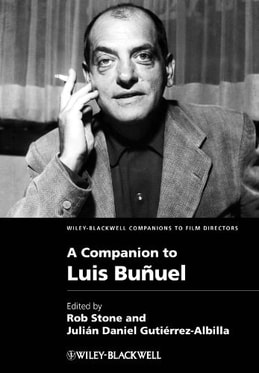
A COMPANION TO LUIS BUÑUEL was co-edited with Julián Daniel Gutiérrez-Albilla. It presents a collection of critical readings by many of the foremost film scholars that examines and reassesses myriad facets of world-renowned filmmaker Luis Buñuel’s life, works, and cinematic themes. It features readings from several of the most highly-regarded experts on the cinema of Buñuel and includes a multidisciplinary range of approaches from experts in film studies, Hispanic studies, Surrealism, and theoretical concepts such as those of Gilles Deleuze. The volume also presents a previously unpublished interview with Luis Buñuel’s son, Juan Luis Buñuel, that I conducted in Paris in 2001 but for which I had never previously found the right home. It's a very handsome book, the quality of the images matching that of the essays and Wiley-Blackwell were great at getting the cover we wanted too. Contributors include Julie Jones, Guy Wood, Mike Bal, Sarah Cooper, Ramona Fotiade, Agustín Sánchez Vidal, Tom Conley, Erica Segre, Tom Whittaker, María Pilar Rodríguez, Ana Moraña, Amparo Martínez Herranz, Geoffrey Kantaris, Sarah Leahy, Ernesto Acevedo-Muñoz, Sherry Velasco, Sally Faulkner, Kate Griffiths, Libby Saxton, Marsha Kinder, Sheldon Penn, Arnaud Duprat de Montero, Peter William Evans, Cristina Moreiras-Menor, Wendy Everett, Paul Begin, Jimmy Hay, Felicity Gee and Susan McCabe.
WILEY-BLACKWELL
WILEY-BLACKWELL
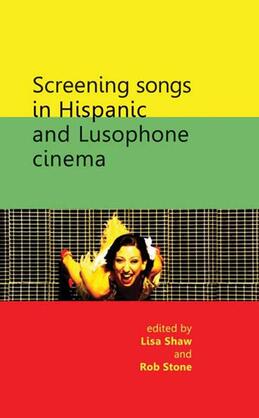
SCREENING SONGS IN HISPANIC AND LUSOPHONE CINEMA was a collaboration with Lisa Shaw that brought together eighteen experts from a variety of academic backgrounds in order to explore the use of songs in films from the Spanish- and Portuguese-speaking worlds. This volume illustrates how - rather than simply helping to tell the story of - songs in Hispanic and Lusophone cinema commonly upset the hierarchy of the visual over the aural, thereby rendering their hearing a complex and rich subject for analysis. My chapter is a peculiar instance of tying off the loose ends of my work on flamenco and that on Basque cinema, wherein I draw a comparative analysis of the cantaor and the bertsolari and their influence on film form. Other chapters cover the soundtracks of films as varied as City of God, All About My Mother, Bad Education and Buena Vista Social Club as well as those of lesser-known works that range from the melodramas of Mexican cinema's golden age to Brazilian and Portuguese musical comedies from the 1940s and 1950s. Fiction films are studied alongside documentaries, the work of established directors like Pedro Almodóvar, Carlos Saura and Nelson Pereira dos Santos alongside that of emerging filmmakers, and performances by iconic stars like Caetano Veloso and Chavela Vargas alongside the songs of Spanish Gypsy groups, Mexican folk songs and contemporary Brazilian rap. A fun and fascinating collection.
MANCHESTER UNIVERSITY PRESS
MANCHESTER UNIVERSITY PRESS
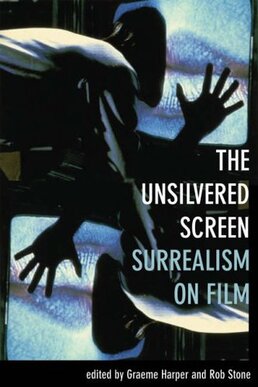
THE UNSILVERED SCREEN: SURREALISM ON FILM was a collaboration with Graeme Harper that brought together leading scholars and critics from the United Kingdom, the United States, Australia, Canada, and Japan to offer fresh, provocative views of canonical Surrealist works from Luis Buñuel, Jan Svankmajer, and David Lynch. Luis Bunuel once recalled that 'the real purpose of Surrealism was not to create a new literary, artistic or even philosophical movement, but to explode the social order, to transform life itself'. Naturally drawn to such comments, here in this volume leading critics from the UK, US, Australia, Canada and Japan offer fresh, and some-times provocative views of canonical Surrealist works from Bunuel, Jan Svankmajer and David Lynch, alongside lively analyses of surprisingly surrealist aspects of contemporary Japanese, Russian and British cinema, Disney animation, digital cinema and documentary, exploring the vibrant effect and considerable legacy of surrealism on film. I used my chapter to tie off a lot of loose ends from my work on Spanish cinema and the book contains some excellent work from Jan Uhde, Ramona Fotiade, Barbara Creed, Peter William Evans and others. Great title, but probably the cover of mine that I least like: the shot is from Cronenberg’s Videodrome, which is fine, but flipping it like a picture playing card is just ugly. A learning curve.
COLUMBIA UNIVERSITY PRESS
COLUMBIA UNIVERSITY PRESS
